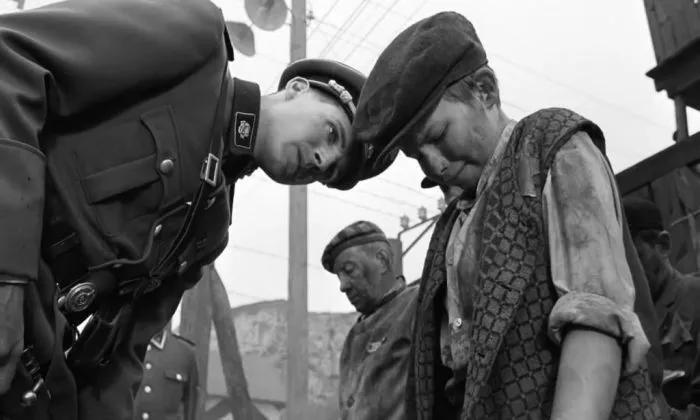“Schindler’s List” (1993), directed by Steven Spielberg, is widely regarded as a powerful and emotionally impactful film that depicts the atrocities of the Holocaust with unflinching realism. The film is known for its raw portrayal of the horrors endured by Jewish individuals during World War II, particularly under Nazi occupation. The depiction of violence, suffering, and inhumanity in “Schindler’s List” raises questions about the film’s level of disturbance and its impact on viewers. In this article, we delve into the aspects of the film that contribute to its disturbing nature and explore how Spielberg effectively conveys the gravity of historical events while respecting the sensitivity of the subject matter.
Unfiltered Realism
One of the most striking elements of “Schindler’s List” is its unfiltered realism, achieved through meticulous attention to historical detail and authenticity. Spielberg’s decision to film in black-and-white, reminiscent of documentary footage from the era, adds a sense of stark reality to the narrative.
The film does not shy away from depicting the brutalities of Nazi oppression, including mass executions, forced labor, and the dehumanization of Jewish individuals in concentration camps. The stark contrast between moments of quiet despair and frenzied violence underscores the film’s unflinching portrayal of human suffering.
Emotional Intensity
“Schindler’s List” is emotionally intense, evoking a wide range of feelings from viewers, including sadness, anger, and profound empathy. The film’s emotional impact is heightened by John Williams’ haunting score, which underscores the gravity of the narrative without overwhelming the scenes.
Spielberg’s direction emphasizes the personal stories of individuals affected by the Holocaust, allowing audiences to connect with the characters on a human level. The emotional depth of the performances, particularly by Liam Neeson as Oskar Schindler and Ralph Fiennes as Amon Goeth, adds layers of complexity to the film’s exploration of moral dilemmas and personal sacrifice.
Depiction of Inhumanity
“Schindler’s List” does not shy away from depicting the full extent of human depravity and inhumanity witnessed during the Holocaust. Scenes of Jewish families being forcibly separated, individuals being subjected to senseless violence, and the indifference of Nazi officers to human suffering leave a profound impact on viewers.
The character of Amon Goeth, portrayed by Ralph Fiennes, embodies the banality of evil, showcasing the sheer brutality and sadism of the Nazi regime. Goeth’s callous indifference to human life and his sense of entitlement over the lives of others epitomize the film’s exploration of moral corruption and moral responsibility.
Confronting Historical Trauma
For many viewers, “Schindler’s List” serves as a confronting reminder of the historical trauma inflicted upon Jewish communities during the Holocaust. The film’s unflinching portrayal of genocide and systematic persecution challenges audiences to confront the horrors of the past and reckon with the enduring legacy of prejudice and intolerance.
Spielberg’s intention in depicting the disturbing realities of the Holocaust is not to sensationalize or exploit suffering but to honor the memory of those who perished and educate future generations about the importance of remembrance and empathy.
Respecting Sensitivity
Despite its disturbing subject matter, “Schindler’s List” approaches its narrative with sensitivity and reverence. Spielberg’s direction strikes a delicate balance between historical accuracy and ethical responsibility, ensuring that the film’s depiction of violence and suffering serves a purpose in advancing the narrative and honoring the experiences of those who lived through the Holocaust.
The film’s impact on viewers is a testament to its effectiveness in conveying the gravity of historical events without resorting to gratuitous violence or sensationalism. Spielberg’s approach to storytelling emphasizes empathy and human connection, inviting audiences to bear witness to history with compassion and understanding.
Conclusion
In conclusion, “Schindler’s List” is a profoundly disturbing yet essential film that confronts the horrors of the Holocaust with unflinching realism and emotional depth. Steven Spielberg’s direction, coupled with powerful performances and a haunting musical score, creates an immersive cinematic experience that resonates with viewers long after the credits roll.
The film’s disturbing nature serves a purpose in honoring the memory of Holocaust victims and educating audiences about the enduring consequences of intolerance and hatred. By confronting historical trauma with sensitivity and respect, “Schindler’s List” challenges viewers to reckon with the darkest chapters of human history and reaffirms the importance of compassion, remembrance, and moral courage in the face of unspeakable evil.
Related Topics:
“Schindler’s List”: How It Changed Holocaust Cinema
Understanding the Main Point of “Schindler’s List”
The Symbolism of the Girl in the Red Coat in “Schindler’s List”

